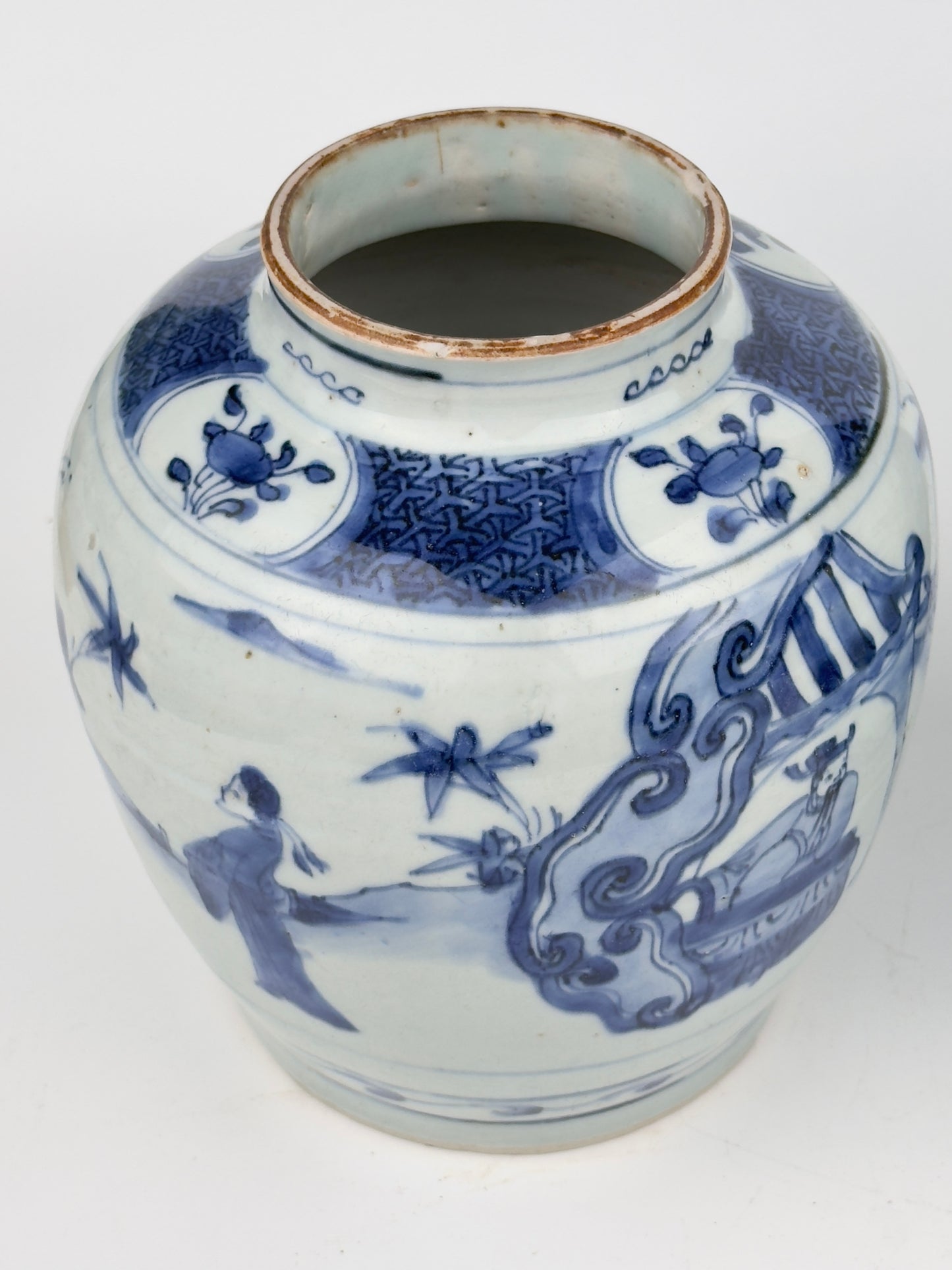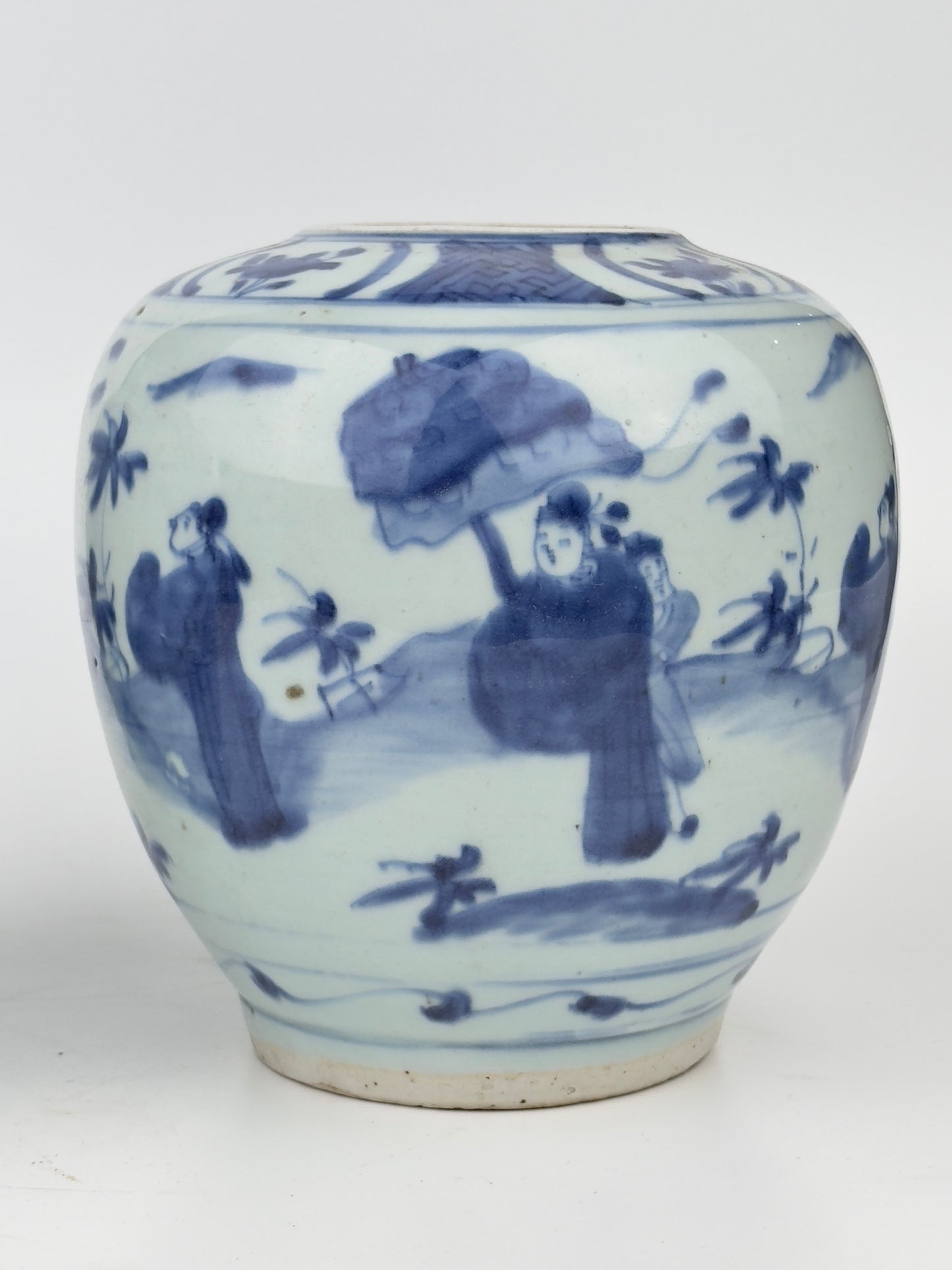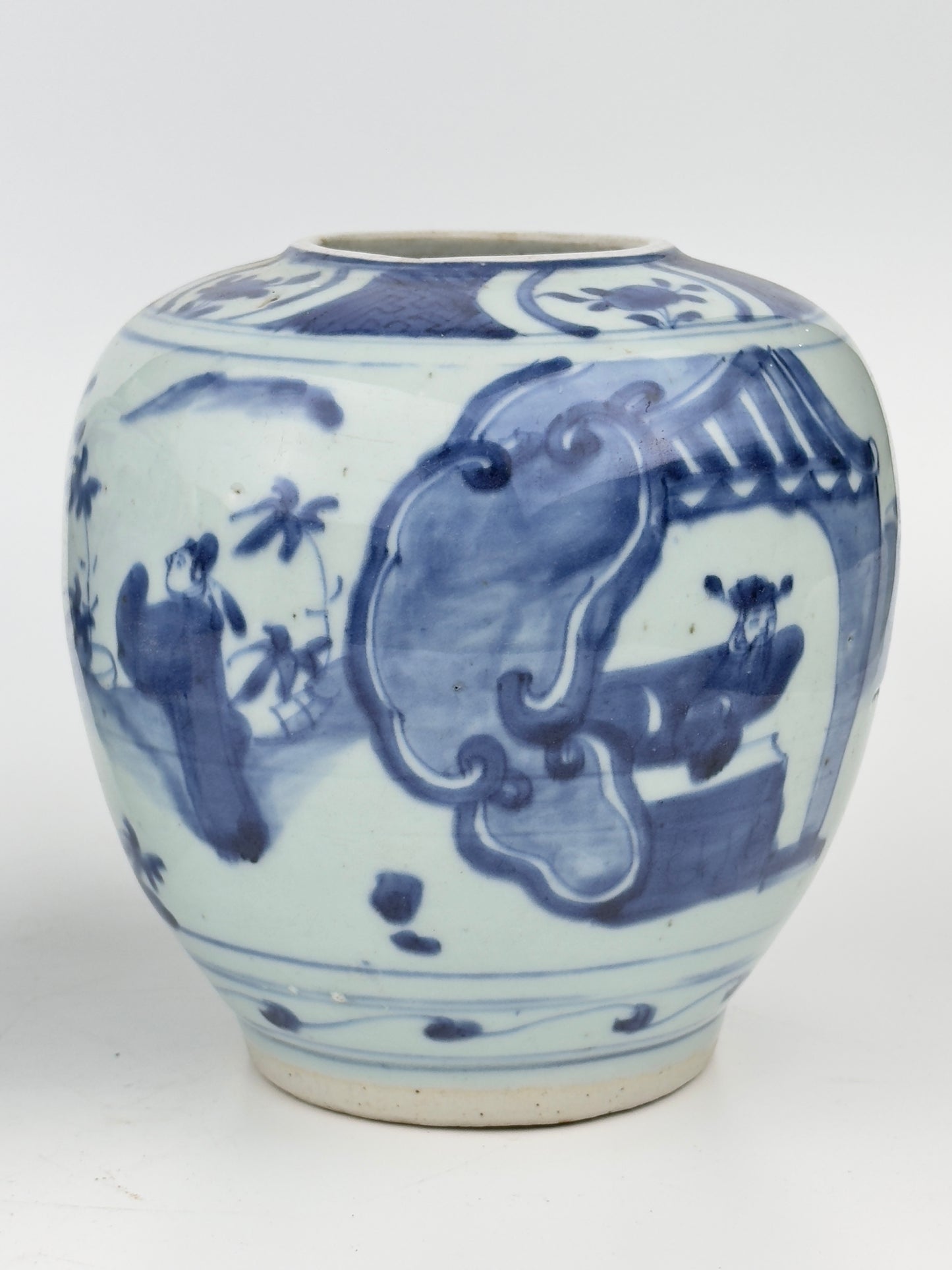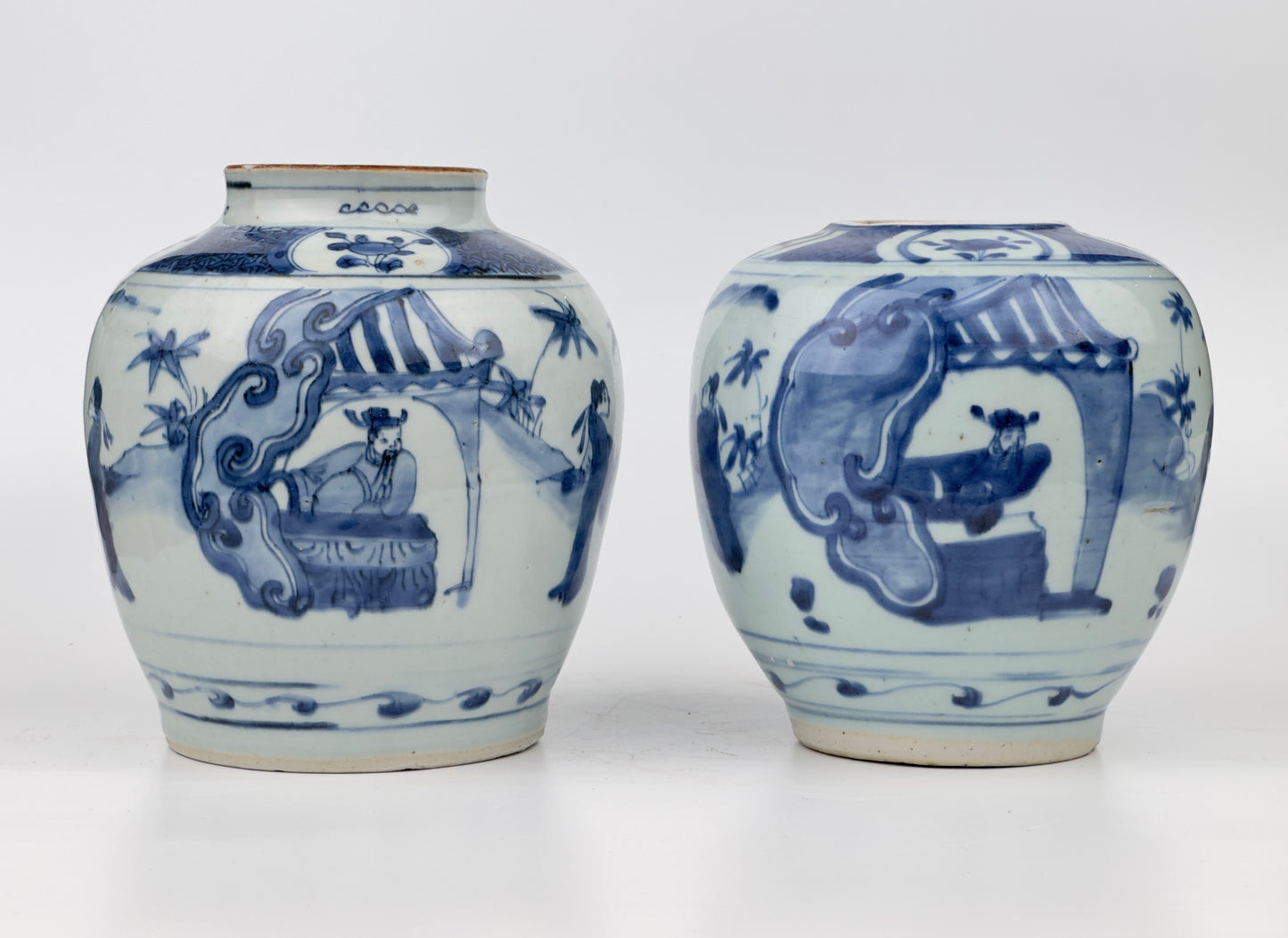Two Chinese blue and white jars, painted with eight figures in a garden, marked on the bottom with a sitting rabbit(blue hare), Transitional period(Late Ming dynasty)
Two Chinese blue and white jars, painted with eight figures in a garden, marked on the bottom with a sitting rabbit(blue hare), Transitional period(Late Ming dynasty)
Couldn't load pickup availability
Chinese porcelain jar, 17th century, painted in underglaze blue with officials in a garden landscape, underglaze blue hare mark to base.
Period : Late Ming-Early Qing Dynasty
Date : 17th century
Size : Left - 18.5cm (Height), 8.5cm(Mouth diameter) / Right - 17cm (Height), 8cm(Mouth diameter)
Condition : Good(Minor chips)
Provenance : Acquired in late 1990s from Hongkong
Reference :
1) Bukowskis June 12-15, 2012 The Spring Classic Sale, Stockholm 568 - Lot 1769
(Price realised : 36,000 SEK / Type : Closely related)
https://www.bukowskis.com/en/auctions/568/1769-a-blue-and-white-jar-ming-dynasty-17th-century?from_language=en
2) Sotheby's London 06 November 2013 - L13211 - Lot 99
(Price realised : 10,000 GBP / Type : Closely related)
https://www.sothebys.com/en/auctions/ecatalogue/2013/fine-chinese-ceramics-works-of-art-l13211/lot.99.html?locale=en
3) Carlo bonte March 16, 2016 - Fine Arts and Antiques Auction - Day 2 - Lot 429
(Price realised : €1,500.00 / Type : Closely related)
https://www.carlobonte.be/auction-lot/a-chinese-blue-and-white-pot-with-cover-painted_90344719E0
* Ming-QIng Transitional period
The Ming-Qing Transitional Period (approximately 1620-1683) saw the production of ceramics characterized by unique features due to the era's political and social instability. During this period, there was a notable diversity in design and advancements in techniques. The traditional blue and white porcelain of the late Ming dynasty evolved to include a variety of colors and designs. The themes and motifs on ceramics became more complex and creative. While cobalt blue underglaze porcelain remained popular, overglaze enamel techniques were also widely used, leading to the introduction of diverse colors and textures in the ceramics.
The ceramics of this period also underwent significant changes in form and function. New shapes emerged, and various types of vessels and containers for everyday use were produced. The development of tea culture was reflected in the creation of teapots and teacups. The design and decoration of ceramics mirrored the social and cultural changes of the time, often featuring literati paintings, landscapes, and figures. Symbols from Daoism and Buddhism, as well as mythical animals, were commonly incorporated. Additionally, this period saw a surge in the export of ceramics, catering to the demands of Europe and other parts of Asia. Export ceramics, particularly blue and white porcelain and wucai (five-colored) ware, were designed to meet the tastes and preferences of these international markets.






































